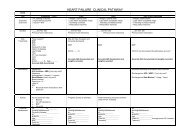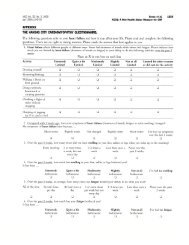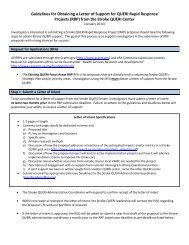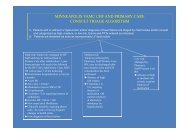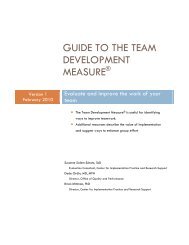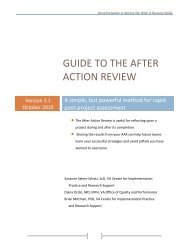The Veteran Supported Education Service Treatment Manual: VetSEd
The Veteran Supported Education Service Treatment Manual: VetSEd
The Veteran Supported Education Service Treatment Manual: VetSEd
You also want an ePaper? Increase the reach of your titles
YUMPU automatically turns print PDFs into web optimized ePapers that Google loves.
Arriving at School<br />
(adapted from Becker & Drake, 2003)<br />
____ Is the <strong>Veteran</strong> aware what time s/he should arrive at school?<br />
____ Does the <strong>Veteran</strong> know the location of all of his/her classes?<br />
____ What is the <strong>Veteran</strong> expecting for the first day?<br />
____ What is the school policy on smoking?<br />
____ Who will the <strong>Veteran</strong> ask if s/he has questions upon arriving?<br />
IV.<br />
THE KEEP PHASE OF <strong>VetSEd</strong><br />
Your role as a peer <strong>VetSEd</strong> provider is not over once a <strong>Veteran</strong> has successfully obtained<br />
the necessary benefits to enroll in school, has selected a program in which to enroll, and<br />
has started school. In fact, many <strong>Veteran</strong>s will get this far only to find that they are<br />
daunted by coursework or are stressed on campus. Thus, in the Keep phase of Choose,<br />
Get, Keep, the role of the peer <strong>VetSEd</strong> provider is to help the <strong>Veteran</strong> “keep” their<br />
education going and to succeed in achieving their educational and long-term vocational<br />
goals. Getting organized for school can be challenging for a lot of <strong>Veteran</strong>s. You may<br />
need to spend time helping them organize their notes, papers, and priorities. To<br />
accomplish this task, a variety of tools are presented that you can use with the <strong>Veteran</strong>. In<br />
this Section, we will describe Strategies for Keeping an educational goal which include:<br />
a) Developing Support on Campus and Resource Mapping; b) Time Management; c)<br />
Coping Strategies; d) Accommodations; and e) Addressing Stigma.<br />
A. Developing Support on Campus and Resource Mapping<br />
A good way to increase support and knowledge about the resources available on campus<br />
is to use Worksheet #14: Campus Resource Assessment. A sample worksheet is provided<br />
in the appendix (Appendix E). <strong>The</strong> worksheet is a valuable tool because it helps map out<br />
resources on campus for <strong>Veteran</strong>s to use in order to overcome issues they may be<br />
experiencing such as the locations of a <strong>Veteran</strong> representative or <strong>Veteran</strong>s support groups<br />
and social gatherings on campus. By learning about and utilizing these resources,<br />
<strong>Veteran</strong>s are better able to achieve their educational goals. Below are the steps to take to<br />
complete Worksheet #14: Campus Resource Assessment with the <strong>Veteran</strong>.<br />
62 | P a g e



